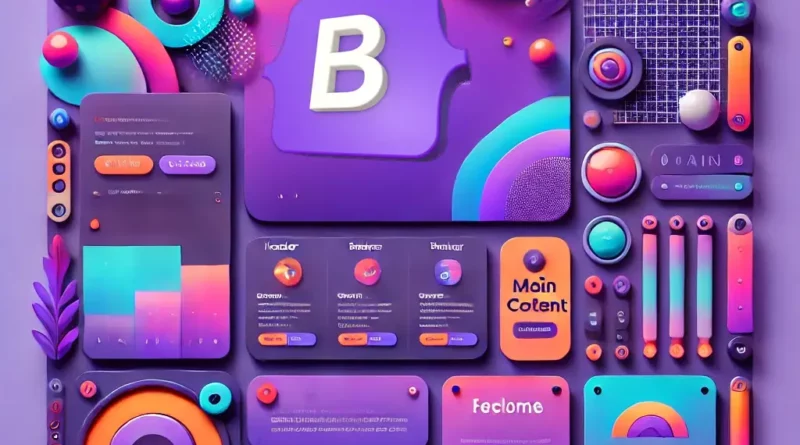Mastering CSS Grid: A Comprehensive Guide for Modern Layouts
In the fast-paced world of web development, staying current with the latest technologies is crucial. CSS Grid, a layout system that brings unmatched versatility, is one such tool that every web designer and developer should be familiar with. As websites become more complex and user expectations grow, CSS Grid allows developers to design layouts with precise control, making it a powerful addition to your design toolkit.
Let’s dive into what makes CSS Grid special and explore how it can transform the way you think about designing for the web.
The Basics of CSS Grid
CSS Grid is a two-dimensional system, meaning it allows you to control both rows and columns simultaneously. This is different from Flexbox, which, while effective, handles only one-dimensional layouts, either horizontally or vertically.
The first step in using CSS Grid is to define a grid container. This is the parent element where the grid layout will be applied. Once a container is established, all its child elements become grid items.
For example, creating a basic three-column grid is straightforward. By using the grid-template-columns property, you can define columns that take up equal space:
.grid-container {
display: grid;
grid-template-columns: repeat(3, 1fr); /* Creates three equal columns */
grid-gap: 10px; /* Adds space between grid items */
}
.grid-item {
background-color: #eee;
padding: 20px;
text-align: center;
}In this example, the grid-template-columns property sets up three equal columns, each taking up one fraction of the available space (1fr). The grid-gap adds space between the items, ensuring a clean, separated layout.
Understanding Grid Lines and Tracks
One of the most powerful aspects of CSS Grid is the ability to place items exactly where you want them using grid lines. These are the invisible lines that divide the grid into individual cells, allowing you to align content precisely. Grid lines can be referenced by their numbers, or you can define a span to stretch an item across multiple columns or rows.
Here’s how you can place an item that spans across two columns:
.grid-item {
grid-column: 1 / 3; /* Spans the grid item from line 1 to line 3 */
grid-row: 1 / 2;
}In this case, the item stretches from grid line 1 to grid line 3, occupying two columns. This precise control over grid placement is one of the key reasons developers are turning to CSS Grid.
Using Grid Areas for Clean Layouts
CSS Grid also introduces grid areas, which allow you to name sections of the grid. This feature is perfect for layouts with repetitive structures, such as dashboards, blog pages, or landing pages, where you want certain content to always appear in specific areas.
For example, here’s how you can define grid areas and assign them to specific elements:
.grid-container {
display: grid;
grid-template-areas:
'header header header'
'sidebar main main'
'footer footer footer';
}
.header { grid-area: header; }
.sidebar { grid-area: sidebar; }
.main { grid-area: main; }
.footer { grid-area: footer; }In this layout, the grid template defines named areas like header, sidebar, main, and footer. Each of these areas corresponds to a specific section of the page, making the layout both easier to manage and understand at a glance. By using grid areas, you can rearrange the structure of your page quickly and without disrupting the flow of your content.
Responsive Layouts with CSS Grid
One of the core challenges of modern web design is ensuring that layouts work well across different screen sizes. CSS Grid’s flexibility shines here, as it allows you to create layouts that respond naturally to different devices, without needing a complex system of media queries.
Consider this example of a responsive grid layout. In this case, the layout has two columns on larger screens, but switches to a single column on smaller devices:
.grid-container {
display: grid;
grid-template-columns: 1fr 2fr; /* One-third and two-thirds columns */
}
@media (max-width: 768px) {
.grid-container {
grid-template-columns: 1fr; /* Single column for smaller screens */
}
}With just a few lines of CSS, the layout will automatically adjust for devices like tablets and smartphones, ensuring a seamless user experience across all screen sizes.
Combining CSS Grid with Flexbox
While CSS Grid is ideal for designing two-dimensional layouts, Flexbox remains a powerful tool for one-dimensional alignment. The two systems can work together harmoniously. For example, you might use CSS Grid to structure the overall layout and Flexbox to control the alignment and distribution of elements within grid items.
Here’s how you can combine the two systems in a layout:
.grid-container {
display: grid;
grid-template-columns: repeat(3, 1fr);
}
.flex-item {
display: flex;
align-items: center;
justify-content: center;
}In this scenario, CSS Grid organizes the layout into three columns, while Flexbox aligns the content within each grid item, ensuring everything is neatly centered. Combining these tools allows for even greater control and flexibility, particularly when dealing with complex content or interactive elements.
Practical Applications of CSS Grid
The versatility of CSS Grid makes it applicable to a wide range of web design projects. For example, a blog layout could use CSS Grid to arrange featured posts and regular articles in a clean, organized manner. Similarly, a product gallery could be built with grid areas, allowing for a visually engaging design that adapts to different screen sizes.
In a dashboard design, CSS Grid’s ability to span items across multiple rows and columns makes it easy to create a responsive interface where charts, stats, and controls are neatly aligned and dynamically adjusted.
Conclusion
CSS Grid brings a new level of control and sophistication to web layouts. Whether you’re building a complex application interface or a simple content page, mastering the fundamental concepts of CSS Grid—grid containers, grid lines, and grid areas—opens up a world of design possibilities. Its ability to create flexible, responsive, and highly customizable layouts ensures that your designs are future-proof and accessible to users across a range of devices.
Start experimenting with CSS Grid today, and you’ll quickly see how it can transform the way you approach layout design. The more you explore, the more you’ll uncover its potential to reshape the future of web development.



